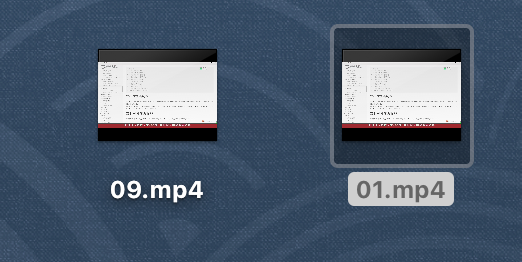1、Channel概念
通道(Channel):用于源节点与目标节点的连接。在 Java NIO 中负责缓冲区中数据的传输。Channel 本身不存储数据,因此需要配合缓冲区进行传输
2、 Channel主要实现的类
|--FileChannel 本地io
|--SocketChannel TCP网络io
|--ServerSocketChannel TCP网络io
|--DatagramChannel UDP网络io
3、 获取通道
3.1 Java 针对支持通道的类提供了 getChannel() 方法
本地 IO:FileInputStream、FileOutputStream、 RandomAccessFile
网络IO:Socket、ServerSocket、DatagramSocket
//利用通道完成文件的复制(非直接缓冲区)
@Test
public void test1(){
long start = System.currentTimeMillis();
FileInputStream fis = null;
FileOutputStream fos = null;
//①获取通道
FileChannel inChannel = null;
FileChannel outChannel = null;
try {
fis = new FileInputStream("/Users/tentsuuhou/Desktop/01.mp4");
fos = new FileOutputStream("/Users/tentsuuhou/Desktop/09.mp4");
inChannel = fis.getChannel();
outChannel = fos.getChannel();
//②分配指定大小的缓冲区
ByteBuffer buf = ByteBuffer.allocate(1024);
//③将通道中的数据存入缓冲区中
while(inChannel.read(buf) != -1){
buf.flip(); //切换读取数据的模式
//④将缓冲区中的数据写入通道中
outChannel.write(buf);
buf.clear(); //清空缓冲区
}
} catch (IOException e) {
e.printStackTrace();
} finally {
if(outChannel != null){
try {
outChannel.close();
} catch (IOException e) {
e.printStackTrace();
}
}
if(inChannel != null){
try {
inChannel.close();
} catch (IOException e) {
e.printStackTrace();
}
}
if(fos != null){
try {
fos.close();
} catch (IOException e) {
e.printStackTrace();
}
}
if(fis != null){
try {
fis.close();
} catch (IOException e) {
e.printStackTrace();
}
}
}
long end = System.currentTimeMillis();
System.out.println("耗费时间为:" + (end - start));
}
我用的是mac系统,01.mp4视频25M左右,第一次复制时间1024ms,然后覆盖重新执行,大概左右在683ms,如果可以,大家可以试试1G以上的视频,看看需要多久


3.2、在 JDK 1.7 中的 NIO.2 针对各个通道提供了静态方法 open()
//使用直接缓冲区完成文件的复制(内存映射文件)
@Test
public void test2(){
long start = System.currentTimeMillis();
FileChannel inChannel = null;
FileChannel outChannel= null;
try {
inChannel = FileChannel.open(Paths.get("/Users/tentsuuhou/Desktop/01.mp4"), StandardOpenOption.READ);
outChannel = FileChannel.open(Paths.get("/Users/tentsuuhou/Desktop/08.mp4"), StandardOpenOption.WRITE, StandardOpenOption.READ, StandardOpenOption.CREATE);
//内存映射文件
MappedByteBuffer inMappedBuf = inChannel.map(MapMode.READ_ONLY, 0, inChannel.size());
MappedByteBuffer outMappedBuf = outChannel.map(MapMode.READ_WRITE, 0, inChannel.size());
//直接对缓冲区进行数据的读写操作
byte[] dst = new byte[inMappedBuf.limit()];
inMappedBuf.get(dst);
outMappedBuf.put(dst);
} catch (IOException e){
e.printStackTrace();
} finally {
try {
inChannel.close();
} catch (IOException e) {
e.printStackTrace();
}
try {
outChannel.close();
} catch (IOException e) {
e.printStackTrace();
}
}
long end = System.currentTimeMillis();
System.out.println("耗费时间为:" + (end - start));
}
第一次:371ms,第二次104ms,证明直接缓冲区比间接缓冲区效率搞了很多。
3.3、在 JDK 1.7 中的 NIO.2 的 Files 工具类的 newByteChannel()
直接字节缓冲区还可以通过FileChannel的map()方法将文件区域直接映射到内存中来创建。该方法返回 MappedByteBuffer 。Java 平台的实现有助于通过 JNI 从本机代码创建直接字节缓冲区。如果以上这些缓冲区 中的某个缓冲区实例指的是不可访问的内存区域,则试图访问该区域不会更改该缓冲区的内容,并且将会在 访问期间或稍后的某个时间导致抛出不确定的异常。
@Test
public void test7(){
long start = System.currentTimeMillis();
FileChannel in = null;
FileChannel out = null;
try {
in = (FileChannel) Files.newByteChannel(Paths.get("/Users/tentsuuhou/Desktop/01.mp4"),StandardOpenOption.READ);
out = (FileChannel) Files.newByteChannel(Paths.get("/Users/tentsuuhou/Desktop/07.mp4"),StandardOpenOption.READ,StandardOpenOption.WRITE,StandardOpenOption.CREATE);
MappedByteBuffer inMap = in.map(MapMode.READ_ONLY,0,in.size());
MappedByteBuffer outMap = out.map(MapMode.READ_WRITE,0,in.size());
byte[] bytes = new byte[inMap.limit()];
//直接对缓冲区进行数据的读写操作
inMap.get(bytes);
outMap.put(bytes);
} catch (IOException i){
i.printStackTrace();
} finally {
try {
in.close();
} catch (IOException e) {
e.printStackTrace();
}
try {
out.close();
} catch (IOException e) {
e.printStackTrace();
}
}
long end = System.currentTimeMillis();
System.out.println(end-start);
}
同样使用的是直接缓冲区,速度和上面基本一致,只不过这个是用newByteChannel() 方法创建通道。
4、通道之间的数据传输
4.1 transferFrom()
4.2 transferTo()
//通道之间的数据传输(直接缓冲区)
@Test
public void test3(){
FileChannel inChannel = null;
FileChannel outChannel = null;
try {
inChannel = FileChannel.open(Paths.get("/Users/tentsuuhou/Desktop/01.mp4"), StandardOpenOption.READ);
outChannel = FileChannel.open(Paths.get("/Users/tentsuuhou/Desktop/06.mp4"), StandardOpenOption.WRITE, StandardOpenOption.READ, StandardOpenOption.CREATE);
//使用下面transferTo 或者 transferFrom 都可以达到目的
//inChannel.transferTo(0, inChannel.size(), outChannel);
outChannel.transferFrom(inChannel, 0, inChannel.size());
} catch (IOException e){
e.printStackTrace();
} finally {
try {
inChannel.close();
} catch (IOException e) {
e.printStackTrace();
}
try {
outChannel.close();
} catch (IOException e) {
e.printStackTrace();
}
}
}
5、分散(Scatter)与聚集(Gather)
5.1 分散读取(Scattering Reads):将通道中的数据分散到多个缓冲区中
5.2 聚集写入(Gathering Writes):将多个缓冲区中的数据聚集到通道中
//分散和聚集
@Test
public void test4() throws IOException{
RandomAccessFile raf1 = new RandomAccessFile("1.txt", "rw");
//1. 获取通道
FileChannel channel1 = raf1.getChannel();
//2. 分配指定大小的缓冲区
ByteBuffer buf1 = ByteBuffer.allocate(100);
ByteBuffer buf2 = ByteBuffer.allocate(1024);
//3. 分散读取
ByteBuffer[] bufs = {buf1, buf2};
channel1.read(bufs);
for (ByteBuffer byteBuffer : bufs) {
byteBuffer.flip();
}
System.out.println(new String(bufs[0].array(), 0, bufs[0].limit()));
System.out.println("-----------------");
System.out.println(new String(bufs[1].array(), 0, bufs[1].limit()));
//4. 聚集写入
RandomAccessFile raf2 = new RandomAccessFile("2.txt", "rw");
FileChannel channel2 = raf2.getChannel();
channel2.write(bufs);
}
没有什么效率的问题,只是记住有这么一个功能就好了
6、字符集:Charset
6.1 编码:字符串 -> 字节数组
6.2 解码:字节数组 -> 字符串
//字符集
@Test
public void test6() throws IOException{
Charset cs1 = Charset.forName("utf-8");
//获取编码器
CharsetEncoder ce = cs1.newEncoder();
//获取解码器
CharsetDecoder cd = cs1.newDecoder();
CharBuffer cBuf = CharBuffer.allocate(1024);
cBuf.put("我爱开源中国,作者MuJiuTian!");
cBuf.flip();
//编码
ByteBuffer bBuf = ce.encode(cBuf);
for (int i = 0; i < 36; i++) {
System.out.println(bBuf.get());
}
//解码
bBuf.flip();
CharBuffer cBuf2 = cd.decode(bBuf);
System.out.println(cBuf2.toString());
System.out.println("------------------------------------------------------");
Charset cs2 = Charset.forName("utf-8");
bBuf.flip();
CharBuffer cBuf3 = cs2.decode(bBuf);
System.out.println(cBuf3.toString());
}





















 122
122











 被折叠的 条评论
为什么被折叠?
被折叠的 条评论
为什么被折叠?








